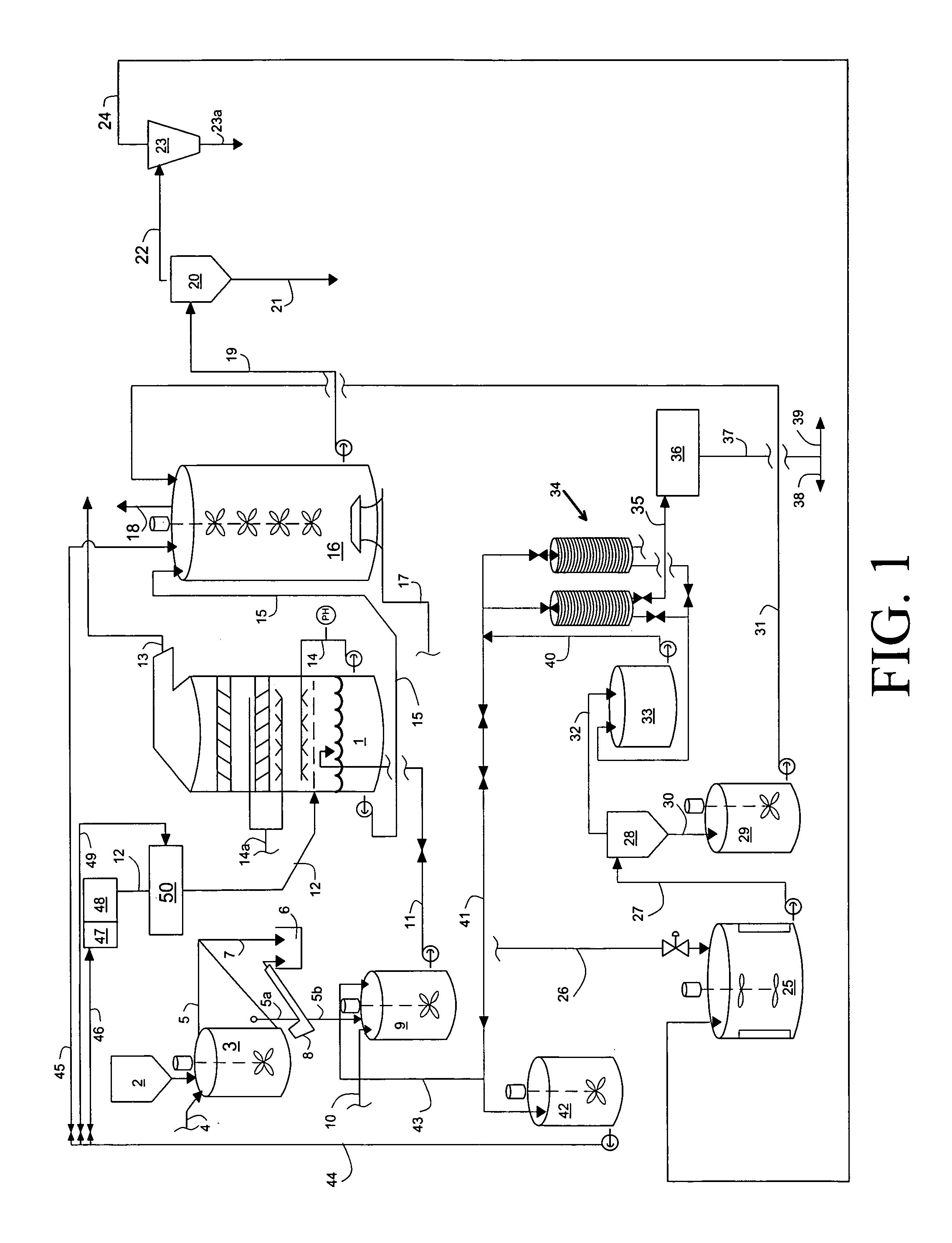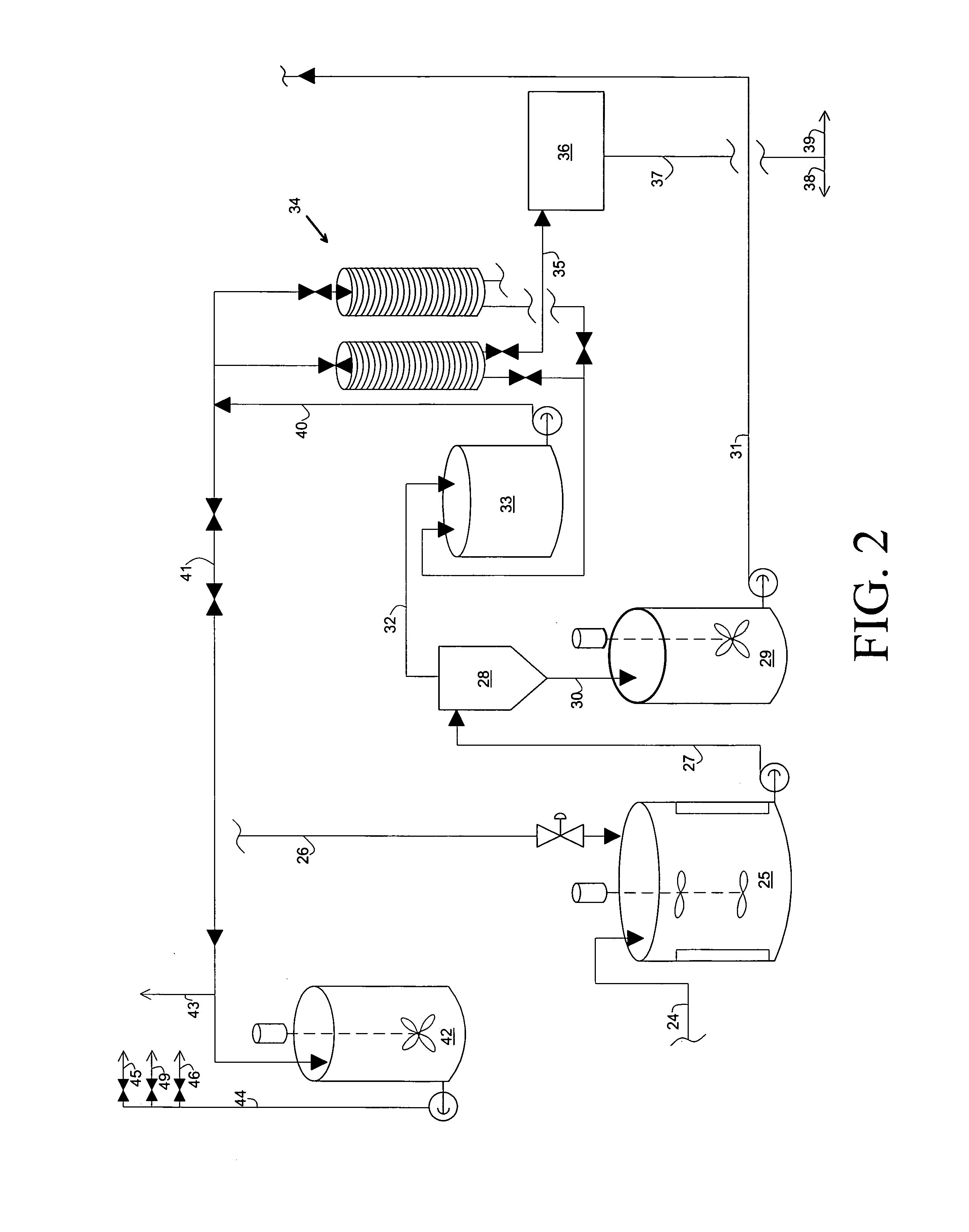Method of removing sulfur dioxide from flue gases and treatment of oxidized effluent therefrom
- Summary
- Abstract
- Description
- Claims
- Application Information
AI Technical Summary
Benefits of technology
Problems solved by technology
Method used
Image
Examples
Example
[0018]The present invention provides a method of removing sulfur dioxide from a flue gas stream of a power plant boiler using a wet scrubber, and a method for treating a bleed stream from a magnesium-containing portion of an oxidized effluent from an oxidizer, resulting from a magnesium-enhanced calcium slurry sulfur dioxide removal process, the oxidized effluent containing magnesium sulfate, gypsum and amorphous inert material.
[0019]Referring now to FIG. 1, as shown therein, an aqueous scrubbing slurry is contacted with a sulfur dioxide-containing gas in a wet scrubbing unit 1, so as to remove sulfur dioxide therefrom. The aqueous scrubbing slurry contains magnesium scrubbing components, and an especially useful slurry contains magnesium-enhanced lime. Lime or limestone may be used, although the following description will describe the use of lime as the calcium scrubbing component. Such a general process is described in U.S. Pat. No. 5,645,807 to Tseng et al., and U.S. Pat. No. 6,572,
PUM
| Property | Measurement | Unit |
|---|---|---|
| Percent by mass | aaaaa | aaaaa |
| Concentration | aaaaa | aaaaa |
Abstract
Description
Claims
Application Information
 Login to view more
Login to view more - R&D Engineer
- R&D Manager
- IP Professional
- Industry Leading Data Capabilities
- Powerful AI technology
- Patent DNA Extraction
Browse by: Latest US Patents, China's latest patents, Technical Efficacy Thesaurus, Application Domain, Technology Topic.
© 2024 PatSnap. All rights reserved.Legal|Privacy policy|Modern Slavery Act Transparency Statement|Sitemap



